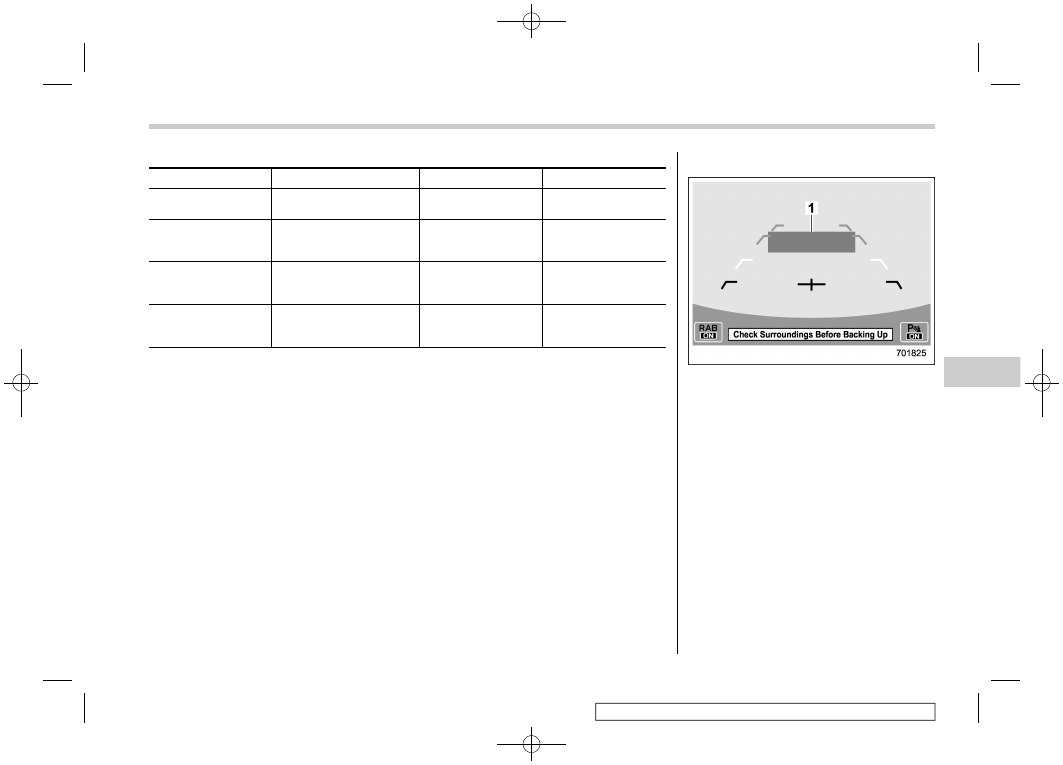Subaru Ascent (2019 year). Instruction - part 24

(371,1)
北米Model "A3200BE-A" EDITED: 2018/ 3/ 5
Guideline of detecting range
Alert level
Range of detected object*
Distance indicator
Alarm pattern
Long proximity (ob-
ject detected)
35 inches (90 cm) or more Green
No warning sound
Medium proximity
alert (approaching the
object)
28 to 35 inches (70 to 90
cm)
Yellow
Short beeps
Short proximity alert
(approaching closer
to the object)
20 to 28 inches (50 to 70
cm)
Orange
Rapid short beeps
Closest proximity
alert (too close to the
object)
20 inches (50 cm) or less
Red
Continuous beep
*: Range of detection may vary depending on the environmental condition.
!
Obstacle detected and alert level
Long proximity alert (object detected)
1)
Green: 35 inches (90 cm) or more
– CONTINUED –
Reverse Automatic Braking System
369
7
Starting
and
operating